Marketers often prioritize their website and link-building strategy to improve SEO results. However, email is an equally important channel for generating authentic traffic for SEO purposes, boosting engagement, and improving revenues.
Read on to learn more about email marketing, SEO, and seven strategies for leveraging email marketing for your SEO efforts.
Table of Contents
What Is SEO?
SEO or Search Engine Optimization is a set of strategies you can use to develop content that aligns with the criterion Google has developed to identify relevant and high-quality results.
The goal is to make your content more noticeable in search results to get more traffic. However, getting more clicks isn’t sufficient.
You need to make sure these clicks come from users who correspond to the audience you’re targeting.
Because Google uses algorithms with hundreds of ranking factors, your approach to SEO should be holistic. Your efforts might include:
- Keyword optimization
- Online reputation management
- Growing an organic audience
- Delivering a good user experience
- Focus on link building strategies
A solid SEO campaign will increase revenues. It will help you target the right audience for what you offer besides representing your products or services accurately.
Why Should You Invest Into SEO?
There are a few reasons to prioritize SEO:
- It improves your visibility and online outreach.
- It brings qualified leads to your site.
- You can increase your conversion rate by putting the right content in front of users at the right time in their buying journey.
- You can segment your audience to offer a more personalized experience tailored to the user’s intent.
- SEO statistics prove that businesses can achieve incredible results by using SEO hacks effectively.
SEO and Revenue Are Intricately Connected in Today’s Digital World
Revenue marketing is about measuring your marketing efforts by focusing on revenues. It’s a goal-oriented approach.
You can track your revenues for different channels and campaigns, and optimize them to earn more. You can also identify the channels or campaigns with the best ROI and replicate these efforts.
Even though revenue marketing spans over multiple channels, you’re going to find some strategies that overlap between these channels.
For instance, there are some areas in common between organic searches and email marketing:
- The goal of the user is to discover content that is useful, interesting, or entertaining.
- Both channels use some degree of targeting and segmentation. With organic search, the keywords used can tell you a lot about the profile of the user while a good email marketing campaign should include segments.
- You need attention-grabbing titles on both channels, whether you’re trying to get users to open an email or click on a page.
- It’s important to deliver value on both channels. An email that delivers on this promise will result in a user opening future emails or following a link to your site. A webpage that delivers customer value often leads to the user visiting additional pages.
- Some web pages share a similar purpose with emails since you want to get users to take action or make a purchase.
By focusing on creating an email marketing campaign that drives clicks and engagement while improving the customer service helps your overall marketing efforts.
The clicks you get from email will add to your organic traffic, the positive experience you deliver will support your reputation management efforts, and engaging emails can result in longer web sessions once a user visits your site.
Here are seven email marketing strategies you can use to get better results with your SEO and revenue marketing efforts.
1. Make it Personal with a Video
One of the issues you might run into with emails is that you’re sending content to a large list. Things can get a bit impersonal.
Besides adopting a tone that feels friendly and engaging, you can make your emails feel more personal with video messages. Seeing a human face deliver a message can create a greater impact.
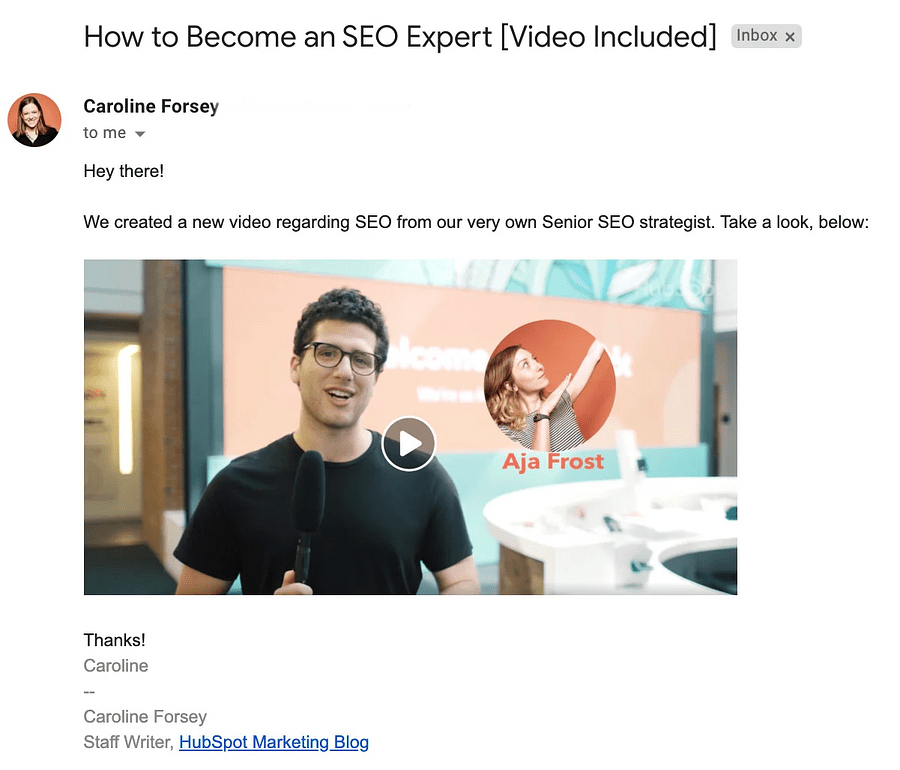
You’re no longer sending a generic branded email. You’re sharing a message from another human. Including a video can make an email more engaging, personal, and trustworthy.
On average, people spend almost seven hours a week watching videos online. It’s obviously a content format that users like and will want to consume.
Creating videos is easy with tools like Loom. Companies often use this tool to share messages from their CEO or to show product demos.
A few things to keep in mind when crafting video messages:
- Keep the video short. Don’t expect users to open an email and sit through an entire webinar.
- Tell users what they will find in the video in the introduction of your email.
- Video and audio quality matter. They can shape how recipients perceive your brand.
- Make sure the video loads quickly.
- The message of the video should be relevant for the recipient and where they are in their journey. An advanced product demo won’t be a good fit for someone who just joined your mailing list.
- End the video with a call to action.
2. Tell a Story
When writing copy, your primary objective should be to keep people reading. One way to do this is to share compelling stories.
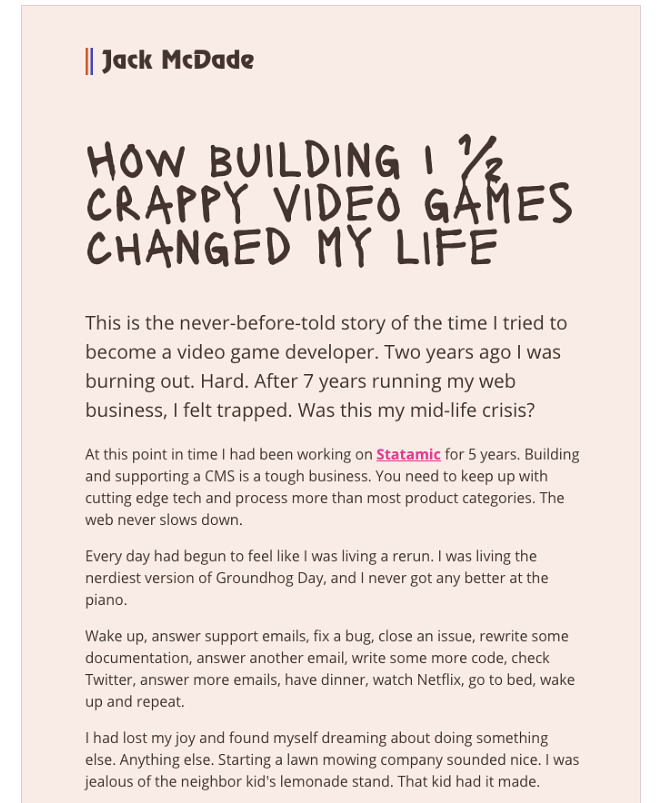
You’ll often find branded content that uses a clear narrative structure. The copy might start by describing a problem or pain point the user can relate to.
A journey to finding a solution follows. The story usually introduces the product or service in an ‘aha’ moment and ends with a resolution where the product solves the initial problem.
Stories are the best way to keep people hooked, and it’s ideal for the email channel.
Start with a hook.
Describe the situation recipients can relate to. An engaging hook will keep users reading, and it can even improve your opening rates for those who use a preview pane to filter their emails.
Here’s the catch.
Your email shouldn’t include the end of the story. Instead, users will have to click a ‘read on’ button to visit a landing page and know how the story ends.
There are different types of stories you can tell with this technique. You can share a testimonial from a customer, craft an email around a case study, or even write about a fictional scenario that highlights a product benefit.
The story you tell should make sense for the users you’re targeting. The email, the end of the story on the landing page, and the call-to-action that follows need to match where the recipient is in their buying journey.
3. Use Content That Is Mobile Friendly
Did you know that users open almost half of marketing emails on mobile?
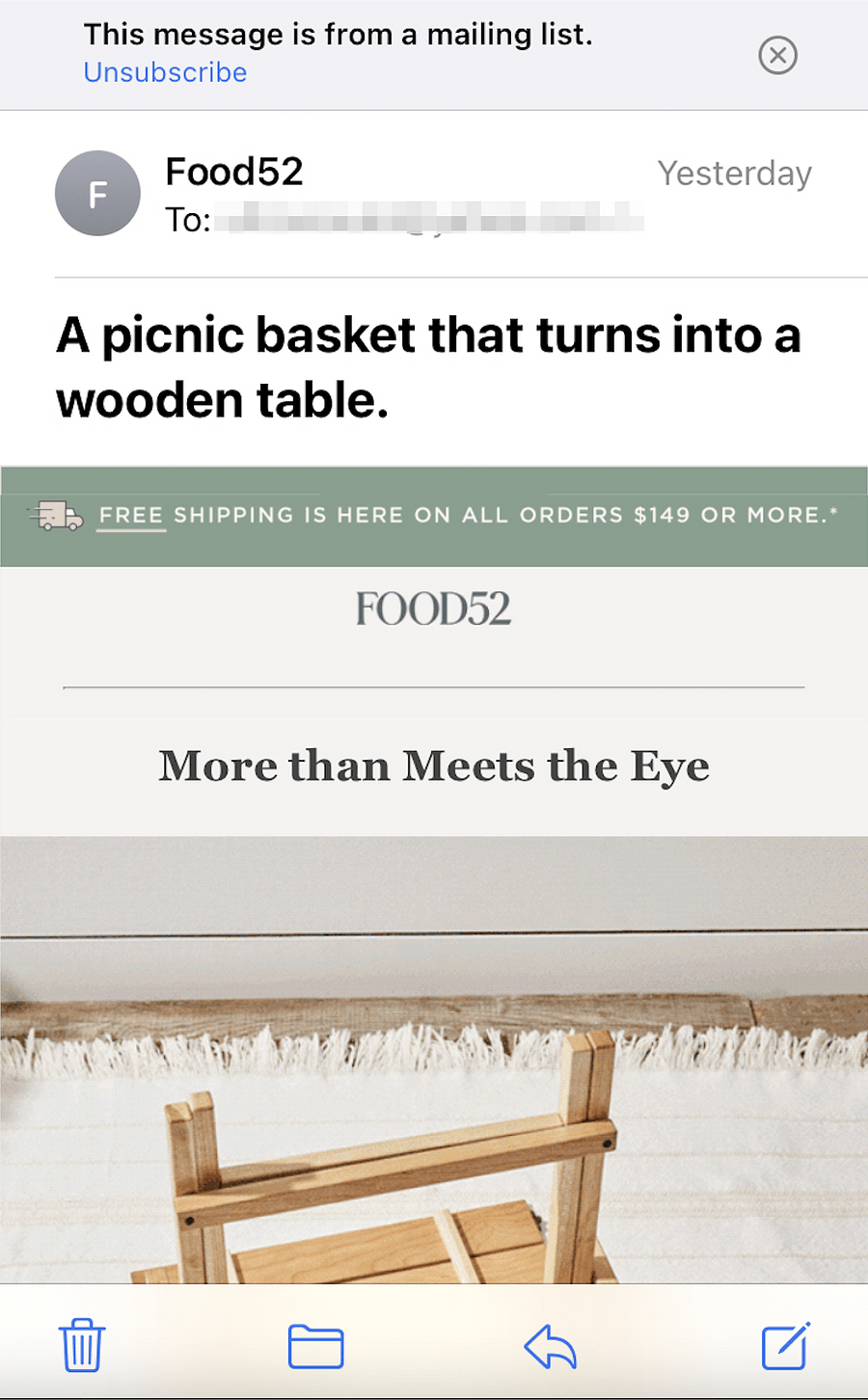
Optimizing your content for this platform will result in a better user experience. Recipients will be more likely to open future emails on the go for better engagement rates.
There are a few things you can do to deliver a better experience on mobile:
- Limit the number of images you use.
- Choose a responsive template to accommodate different screen sizes.
- Make every word count since recipients might not see the entire title or might see a limited preview.
- Keep your emails short. Users are probably multi-tasking or opening your emails on the go. Tell them what the main takeaway is.
- Links can be hard to click on mobile. Replace them with large buttons.
There are some current trends you can use as a source of inspiration for your email campaign:
- Animations are popular. Movement draws the eye and highlights important information. They can draw the user back in if a user opens an email on mobile and gets distracted.
- Minimalistic designs with a pop of colors result in better loading times and you can use color to evoke your branding and your brand’s color palette. You should consider this both in the logo design and the webpage design
- An S-curve layout is a great way to create a harmonious flow for your emails. Aligning images and elements left and then right creates some visual diversity and helps the user settle into a flow as they scroll. You can use the same layout design on your site for consistency.
4. Create Accessible Content
Bad experiences tend to carry more weight than positive ones. A third of consumers will leave a brand they like after only one negative experience.
Making content accessible is a crucial element of delivering a positive experience. However, there is no go-to formula for crafting a positive experience since UX can be very contextual.

For instance, with the rise of remote work, more recipients are going to open their emails on the go or in a coffee shop. We talked about closed captioning for videos, but there are other things you can do:
- Pick a font size adapted to smaller screens.
- Use an off-white or light gray background for better contrast. Less light will bounce off the screen if a recipient opens your email outdoors.
- Choose a font with large open counters and serifs that don’t stand out too much for optimal readability.
- Include alt text for your images, links, and interactive elements.
- Contrast colors on the opposite ends of the spectrum for those who are colorblind.
5. Increase Your Engagement Time
A high bounce rate tells Google one thing: the page doesn’t meet users’ expectations and isn’t a good recommendation.
On the other end, a website with consistently long web sessions where users explore several pages and consume content will usually achieve a higher ranking in search results.
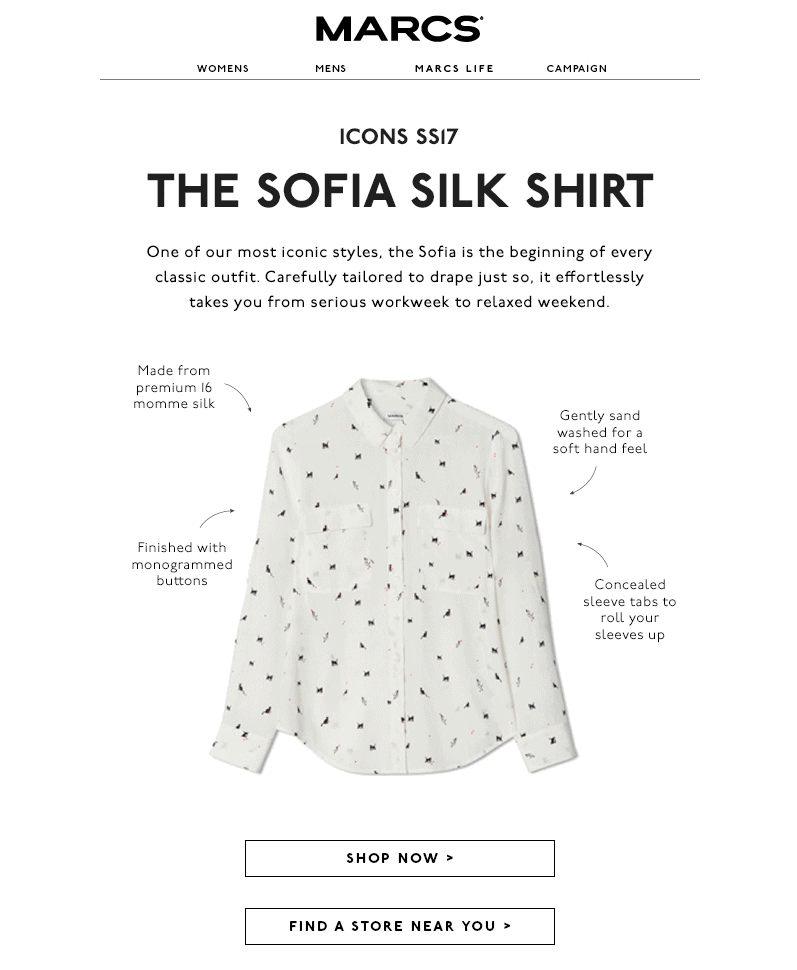
Increasing engagement time can help you get better results with SEO. Before a recipient clicks on a link to visit your site, you can engage them with your emails.
You can use animations for an interactive experience. You could, for instance, ask a question and have users tap on it to see the answer to share some fun facts. Videos are another strong engagement strategy.
Make sure recipients will find a landing page that is relevant to their current intent and if they click on your email.
A user-friendly navigation scheme can also help with engagement since it will help users find more content they want to consume after seeing your landing page.
6. Know Better Where Your Traffic Is Coming From
The great thing about emails is that you can collect data to see how each inbound link performs. With Google Analytics, behavioral analytics software, and other tools, you can create and track unique tags for each campaign and each email.

You should start by conducting an analysis of your target audience and creating different segments based on demographics, location, or relevant psychographic categories.
You can then look at data to see how opening, click-through rates, and revenues vary from one group to another.
This approach will give you a better idea of how awareness levels differ between the segments, and you’ll be able to tailor your content to each group for a more personalized experience.
7. Control your Organic Traffic with Split Testing
A/B testing is a powerful tool to see how variants of a similar message perform. You can use the outcome of these tests to tweak your email campaign and improve your results.
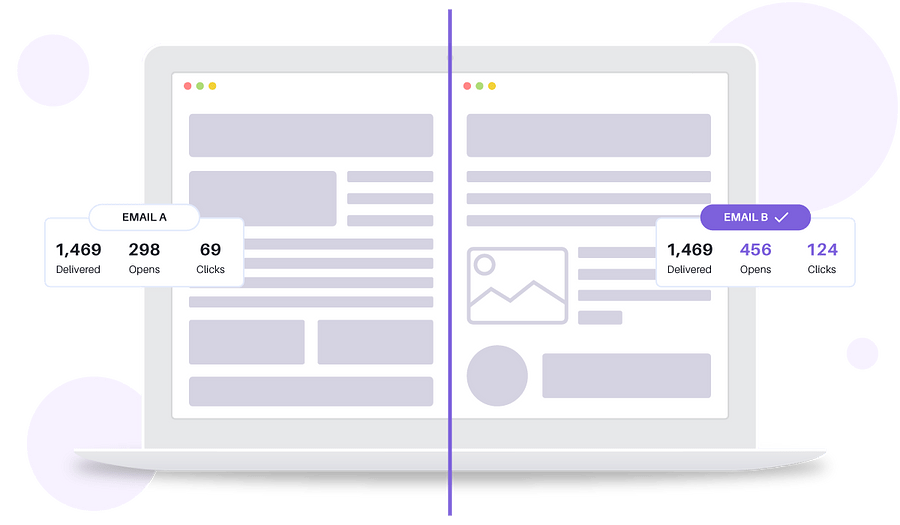
It’s a technique that you can apply to optimize other aspects of your SEO efforts. For instance, marketers often use A/B testing to see which version of a PPC ad draws more clicks or to compare conversions between two landing pages.
You can use A/B testing for a lot of the strategies discussed above, including video messages, stories, or mobile-friendly templates.
Resources to Explore
You can learn more about using Loom to record marketing messages on the official Loom website. If you want to learn more about users’ behaviors on your site, we recommend creating a Google Analytics account if you don’t already have one. Because SEO should be approached holistically, it’s important to always seek new information on the topic and keep up with recent trends.
The Content Marketing Institute regularly publishes articles and research on topics like SEO and measuring revenues and ROI if you want to look into revenue marketing.
Final Thoughts
You’ll get better results with your SEO efforts if you adopt a holistic approach that includes email marketing.
This channel can be a great tool for generating authentic traffic and engagement, and the seven strategies listed above will help you take your emails to the next level in terms of delivering a positive experience and delivering value.
FAQs
1. What is SEO?
SEO or Search Engine Optimization is a set of strategies you can use to develop content that aligns with the criterion Google has developed to identify relevant and high-quality results.
2. What is the goal of SEO?
The goal of SEO is to make your content more noticeable in search results to get more traffic. However, getting more clicks isn’t sufficient.
3. Why should I invest in SEO?
Here are the top few reasons to prioritize SEO:
- It improves your visibility and online outreach.
- It brings qualified leads to your site.
- You can increase your conversion rate by putting the right content in front of users at the right time in their buying journey.
- You can segment your audience to offer a more personalized experience tailored to the user’s intent.
4. Can you suggest some email marketing strategies to get better results with your SEO?
Here are some email marketing strategies you can use to get better results with your SEO:
- Make it personal with a video
- Tell a compelling story
- Use content that is mobile-friendly
- Make content accessible
- Use split testing to better control your organic traffic.